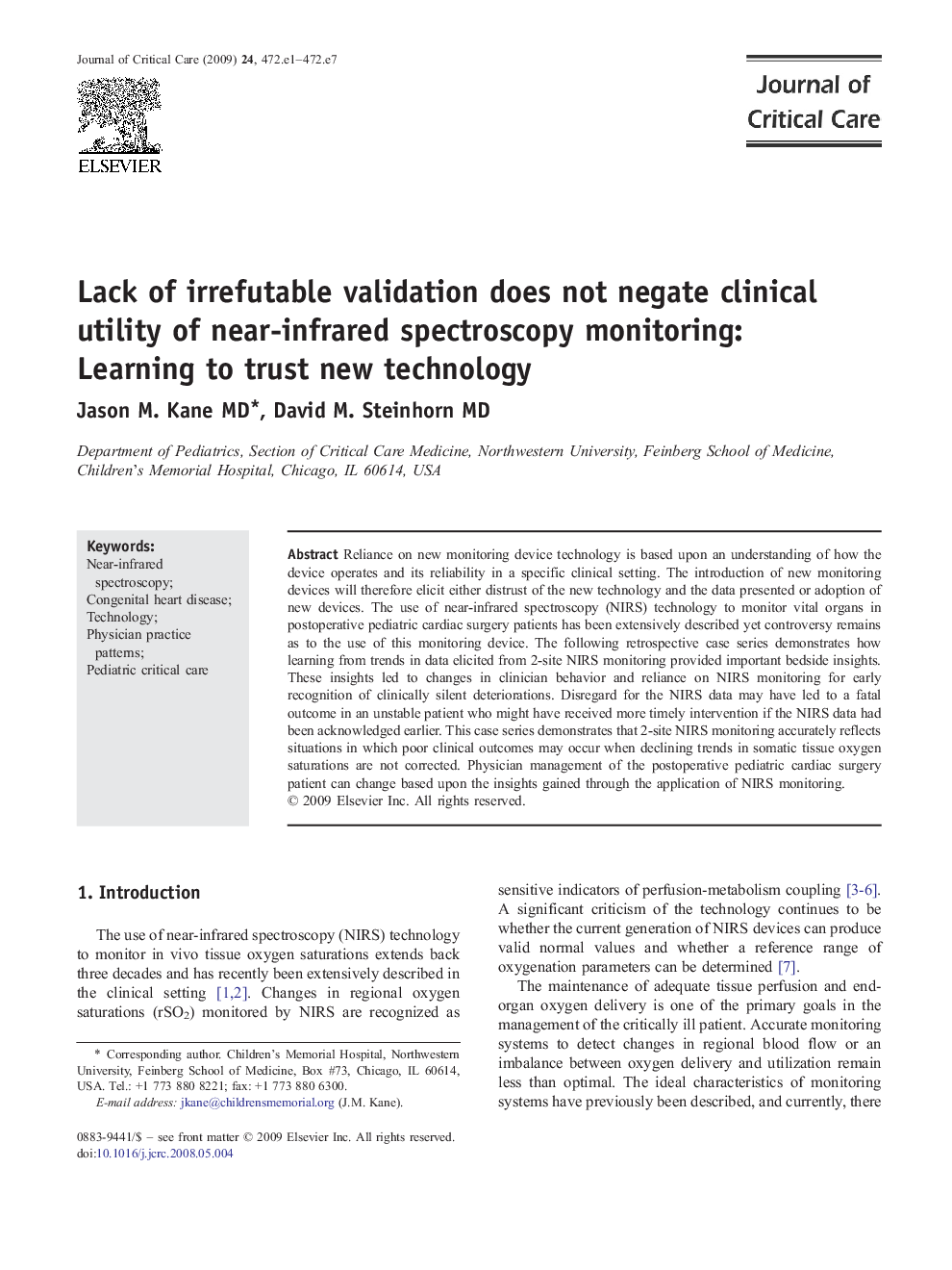| کد مقاله | کد نشریه | سال انتشار | مقاله انگلیسی | نسخه تمام متن |
|---|---|---|---|---|
| 2764761 | 1150937 | 2009 | 7 صفحه PDF | دانلود رایگان |
عنوان انگلیسی مقاله ISI
Lack of irrefutable validation does not negate clinical utility of near-infrared spectroscopy monitoring: Learning to trust new technology
دانلود مقاله + سفارش ترجمه
دانلود مقاله ISI انگلیسی
رایگان برای ایرانیان
کلمات کلیدی
موضوعات مرتبط
علوم پزشکی و سلامت
پزشکی و دندانپزشکی
بیهوشی و پزشکی درد
پیش نمایش صفحه اول مقاله

چکیده انگلیسی
Reliance on new monitoring device technology is based upon an understanding of how the device operates and its reliability in a specific clinical setting. The introduction of new monitoring devices will therefore elicit either distrust of the new technology and the data presented or adoption of new devices. The use of near-infrared spectroscopy (NIRS) technology to monitor vital organs in postoperative pediatric cardiac surgery patients has been extensively described yet controversy remains as to the use of this monitoring device. The following retrospective case series demonstrates how learning from trends in data elicited from 2-site NIRS monitoring provided important bedside insights. These insights led to changes in clinician behavior and reliance on NIRS monitoring for early recognition of clinically silent deteriorations. Disregard for the NIRS data may have led to a fatal outcome in an unstable patient who might have received more timely intervention if the NIRS data had been acknowledged earlier. This case series demonstrates that 2-site NIRS monitoring accurately reflects situations in which poor clinical outcomes may occur when declining trends in somatic tissue oxygen saturations are not corrected. Physician management of the postoperative pediatric cardiac surgery patient can change based upon the insights gained through the application of NIRS monitoring.
ناشر
Database: Elsevier - ScienceDirect (ساینس دایرکت)
Journal: Journal of Critical Care - Volume 24, Issue 3, September 2009, Pages 472.e1-472.e7
Journal: Journal of Critical Care - Volume 24, Issue 3, September 2009, Pages 472.e1-472.e7
نویسندگان
Jason M. MD, David M. MD,